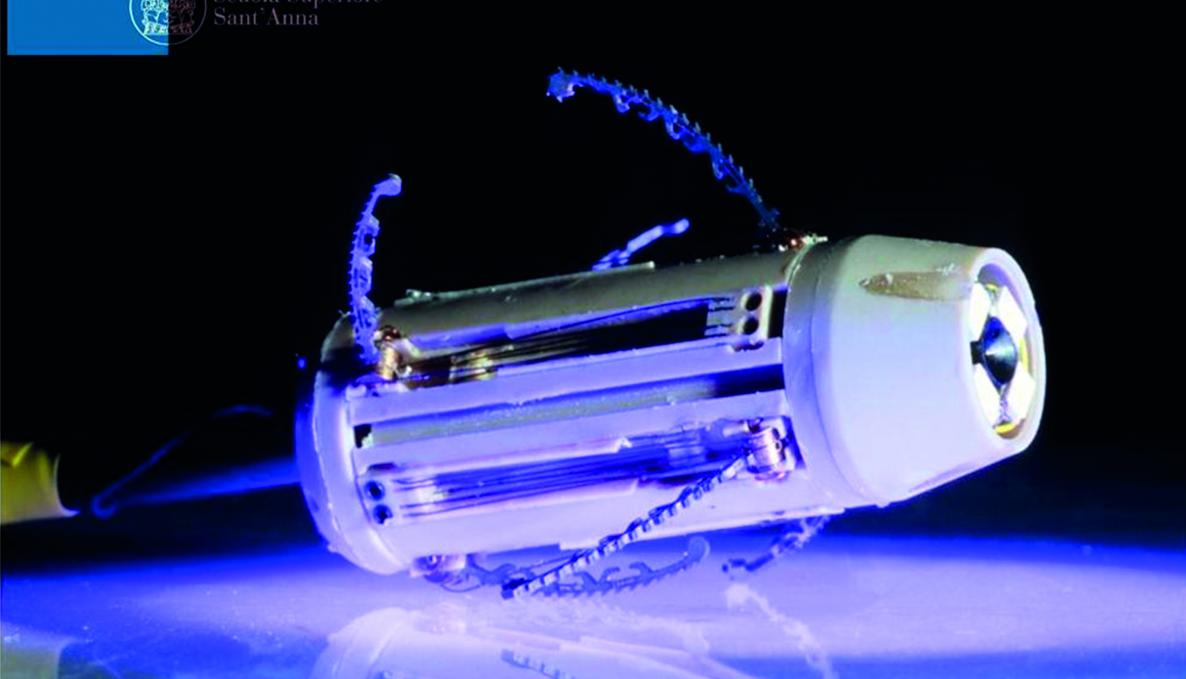medical robotics and robotic endoscopy, a paper co-authored by sant’anna school biorobotics institute reasercher on NON-WHITE LIGHT IMAGING Capsule endoscopy sensors has been published in journal NATURE REVIEWS

The paper “Gastrointestinal diagnosis using non-White Light Imaging capsule endoscopy” co-authored by Gastone Ciuti, a researcher of the Biorobotics Institute, has been published in the medical journal Nature Reviews Gastroenterology & Hepatology. The paper is based on the work carried out by the University of Edimburgh, the University of Glasgow and the University of Dundee about the application of non-White Light Imaging (WLI) diagnostic imaging and sensing technologies to capsule endoscopy. The sensors developed by the researchers in Scotland have the potential to overcome the limitations of WLI through enhanced detection of subtle mucosal microlesions and submucosal and/or transmural pathology.
"Over the past ten years, we have investigated new avenues for improved computer-aided diagnosis – said Gastone Ciuti. We have discussed specific diagnostic technologies at the Minimally Endoscopy Workshop and The Future of Capsule Endoscopy Workshop, under the framework of the UK programme SONOPILL for the exploration of ultrasound imaging and therapeutic capabilities deployed in capsule format. We realized that the integration of imaging technologies into capsule endoscopy devices enables submucosal imaging, improved differentiation between malignant and benign tissue and new avenues for investigating the etiology of disease".
Over the past two decades, several imaging techniques have been developed to overcome the conventional White Light Imaging challenges. WLI diagnostic imaging used in clinical capsule endoscopy is limited to mucosal inspection, with diagnosis remaining reliant on visible manifestations of disease. This research aims to use a range of sensors to measure physiological parameters or to discover new biomarkers to improve the sensitivity, specificity and thus the clinical utility of capsule endoscopy. It summarized investigation into non-WL imaging devices by organizing them into a taxonomic structure based on their sensing modality and confirmed robustness of the analysis findings.
Gastone Ciuti, at the Computer-Integrated Technologies for Robotic Surgery Lab., will pursue the ultimate aim to provide greater capabilities for clinicians, a more acceptable practice for the patient population, and lower costs for economic wellbeing. "Our research at the Computer-Integrated Technologies for Robotic Surgery Lab. – said Ciuti – focuses on new diagnostic capsule designs as a minimally invasive alternative to surgery. Nevertheless, there are still challenges in endoscopy. Intestinal folds can obscure vision and excessive force applied to intestinal walls can result in tissue trauma. Now, we are working on the European Research Council Starting Grant to demonstrate this scientific track record showing great promise”.



